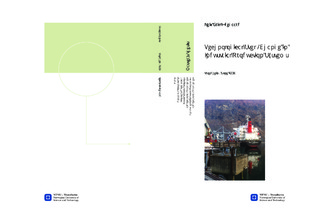| dc.description.abstract | One of the most enduring issues in research on business strategy and organization is how firms can survive and achieve prosperity in the long run. A recurring answer to it is that firms must be ambidextrous: efficient in their conduct of today s business while simultaneously being able to adapt to changes in the environment in the future. The recipe recommended to firms which strive for ambidexterity has often been to conduct two forms of innovation at the same time. Incremental innovations are smaller improvements in existing operations and must be pursued to enhance its efficiency. Radical innovations are concepts which are so new that they are incompatible with the existing organization and needed to stay ahead of and adapt to paradigm shifts in the technology and market. However, combining the pursuit of these innovations has proved difficult. The literature therefore suggests that they be carried out in separate organizational units, but the problem is then how firms can reap the synergies of them though integration. This thesis focuses on technological process innovation in industrial production systems. With this as a scope, it contributes to the understanding of ambidexterity in firms by exploring a new form of process innovation, technological step-change, which theoretically is positioned between incremental and radical innovation. Technological step-change is on one hand distinguished from radical innovation as it does not represent any shifts, but rather is related to the development of the existing production systems. On the other, it is distinguished from incremental innovation as it involves the introduction of new technological artifacts and larger, architectural changes in the system, and as such requires assistance from personnel with advanced technological knowledge. Based on a case study, a conclusion is that incremental innovations and step-changes reinforce each other and that the technology in step-changes has its origin in the radical innovation activities. Therefore, while the separated pursuits of incremental and radical innovations alone are largely independent of each other, technological step-changes form a link between the two and enable ambidexterity. It is furthermore found that step-changes are facilitated by the separation of incremental and radical innovation in distinct organizational units on one hand and integration with integrative mechanisms on the other. | nb_NO |

